1. The Southern Resistance Administrative Committee and Regional Party Committee Base (1946-1949) was one of the three most important revolutionary bases in the South during the 9 years of resistance against French colonialism.
Located in the middle of Dong Thap Muoi region, on the banks of Duong Van Duong canal and Nam Ngan canal, this place spans the communes: Tan Hoa, Nhon Ninh, Tan Ninh, Nhon Hoa Lap, Hau Thanh Dong, Hau Thanh Tay (Tan Thanh district).
Students of Nhon Hoa Lap Primary and Secondary School (Nhon Hoa Lap Commune, Tan Thanh District) visit the Southern Resistance Administrative Committee and Regional Party Committee Base.
During the period 1946-1949, this place was chosen as the base to direct the resistance war against the French colonialists who re-invaded the whole of the South. Important agencies such as the Southern Regional Party Committee, the Southern Resistance Administrative Committee, the Region 8 Command and many affiliated units were stationed here. This is also the place where senior leaders such as Ton Duc Thang, Le Duan, Pham Van Bach, Nguyen Binh, Tran Van Tra,... lived and worked.
The base area was the site of many important historical events: the Congress of the Southern Regional Party Committee, the first broadcast of the Voice of the South , and the screening of the first revolutionary documentary, The Battle of Moc Hoa.
This place is also associated with the activities of the Southern Printing House, the pharmaceutical preparation room, military medical and armament units, and many main battalions and regiments such as 307, 404, 105, 120,...
Currently, the Southern Resistance Administrative Committee and Regional Party Committee Base are restored in Nhon Hoa Lap commune, Tan Thanh district, on an area of about 3 hectares.
The project was inaugurated on August 19, 2017 with a total investment of nearly 130 billion VND. With its great historical value, this place is recognized as a National Historical Relic.
Becoming one of the typical "red addresses" of the province and the Southern region, the relic not only marks a glorious period of resistance but is also a meaningful destination for the journey to learn about history.
Every year, the relic welcomes about 700 visitors, contributing to educating revolutionary traditions and fostering patriotism for today's and tomorrow's young generations.
Deputy Head of the Relic Site Management Board - Ho Thi Cam Van said: "To be able to retell the heroic history is a great honor and pride for me. I am always deeply aware of the responsibility to preserve and spread the historical values here.
Hopefully, every visitor will listen with all their heart to understand more about the great sacrifices that our ancestors made for national independence."
Every year, the Union organizes a journey to the source at the Southern Resistance Administrative Committee and Regional Party Committee Base. Students can visit, take a history quiz, listen to traditional stories, recruit new members and participate in environmental sanitation. This is a meaningful moral and traditional education activity, helping students to be grateful to the previous generation, thereby making efforts to study and practice to become useful citizens. Head of the Team of Nhon Hoa Lap Primary and Secondary School, Nhon Hoa Lap Commune, Tan Thanh District - Cao Diem Kieu |
2. Located in Binh Huu 2 Hamlet, Duc Hoa Thuong Commune, Duc Hoa District, the National Historical Site of Mr. Huong Bo Nguyen Van Tho's Garden (familiarly known as Mr. Bo Tho) is a "red address" educating the young generation about patriotism. Although the landscape has changed, the ancient star fruit tree and the small pond are still there as "historical witnesses", marking the important moment, the day the first Party cell was established in Duc Hoa village.
On March 6, 1930, comrade Vo Van Tan convened a secret meeting in this garden, announcing the transformation of the An Nam Communist Party Branch into the Duc Hoa Village Communist Party Branch of Vietnam . This was the first Party Branch in Cho Lon province and one of the earliest branches established in the South. The branch consisted of 7 comrades, with comrade Vo Van Tan as Secretary and comrade Nguyen Van Say as Deputy Secretary.
Union officials, union members and youth offer incense at the relic site of Mr. Huong Bo Nguyen Van Tho's garden.
The Party cell issued a resolution to use the victory of the Russian October Revolution as propaganda content, launching a movement to mobilize the masses, build a base, and move towards establishing a District Party Committee. From here, the revolutionary movement in Duc Hoa entered a new period, a period with the Party's leadership. This was clearly demonstrated through the demonstration of more than 5,000 farmers against high taxes and duties, which lasted day and night. Despite being suppressed, the movement still forced the colonial government to make concessions and reduce taxes for the people.
This event affirmed the Party's leadership as the decisive factor in the people's struggle. From the initial nucleus, communist organizations spread throughout the province, leading the revolutionary movement from one victory to another.
In 1994, the People's Committee of Duc Hoa district erected a memorial stele in the garden of Mr. Bo Tho's house. By 2012, the house was restored to its original form in the traditional architecture of 3 rooms, 2 wings, wooden frame, and surrounding porch. Next to it is a pond, where the image of a Party cell meeting with 7 party members is recreated, along with a green star fruit tree spreading shade, as a reminder to future generations of a difficult but also extremely heroic period of the nation. Recognizing the special historical value of the event, on October 31, 2013, the Ministry of Culture, Sports and Tourism ranked Mr. Huong Bo Nguyen Van Tho's house garden as a National Historical Relic (Decision No. 3827/QD-BVHTTDL).
According to Deputy Secretary of Duc Hoa District Youth Union - Nguyen Minh Tam, on holidays and Tet, the District Youth Union organizes for union members and youth to clean up, burn incense in memory, and express gratitude. This place is also a place often chosen to organize traditional education activities, fostering revolutionary ideals for the younger generation.
Notably, the District Youth Union and the Vietnam Youth Union of Duc Hoa district have implemented the youth project of Digitalizing Historical and Cultural Relics with 35 QR codes, including 4 QR codes at national-level relics (including the relic of Mr. Bo Tho's Garden), 13 codes at provincial-level relics and 18 codes at prominent locations in the area. These QR codes are beautifully designed, widely and deeply promoted on social networks and mass media channels, helping people, especially young people, easily access and learn about their homeland's history.
The work of educating local traditions and history is truly becoming a driving force, contributing to nurturing love for the homeland and country in the young generation. Thereby, raising awareness, responsibility, fostering the will to overcome difficulties and the desire to contribute, so that each young person today becomes a useful citizen, continuing the heroic tradition of the brave and resilient land of Duc Hoa.
The “ red addresses ” are a testament to the heroic fighting spirit and indomitable will of generations of fathers and brothers in the struggle for national liberation. The preservation and promotion of the value of historical relics demonstrates the morality of “When drinking water, remember its source” and is an important political and cultural task in the cause of building and developing the homeland today./.
By visiting “red addresses”, I understand more about history, patriotism and national traditions. These source activities help me to have more awareness of studying, understanding history and spreading that spirit to my peers. Nguyen Tuyet Ngan (9th grade student, Nhon Hoa Lap Primary & Secondary School) |
Netherlands - Kieu Thi
Source: https://baolongan.vn/dia-chi-do-chung-nhan-lich-su-day-long-yeu-nuoc-a196737.html


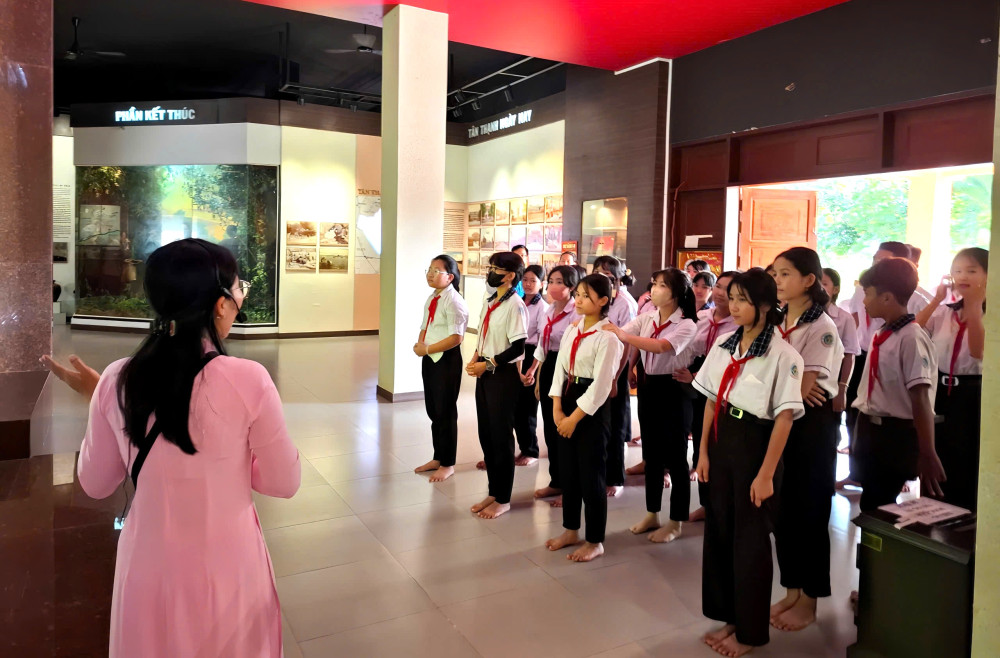
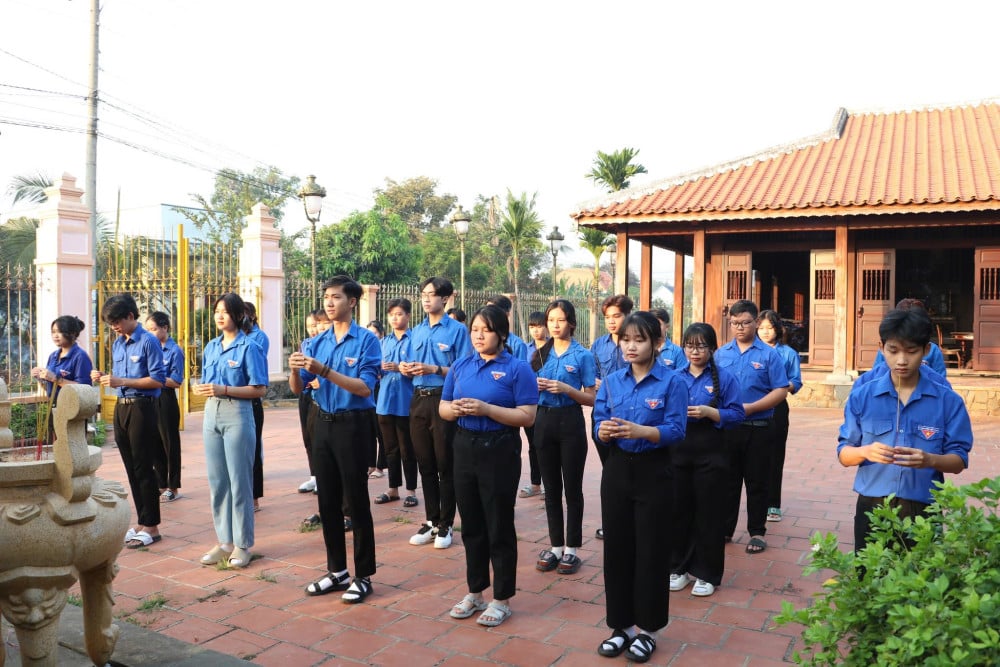













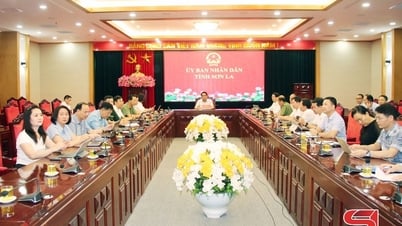








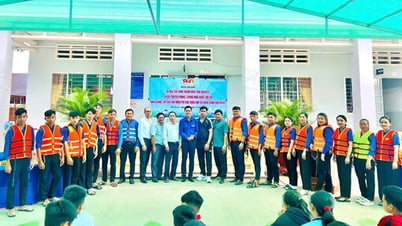






















































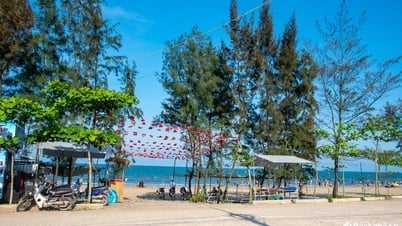
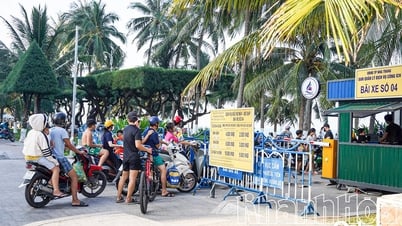



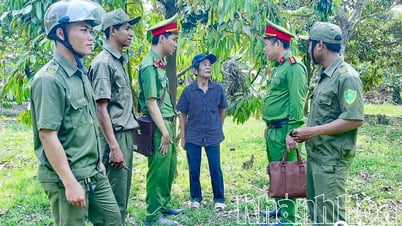















Comment (0)